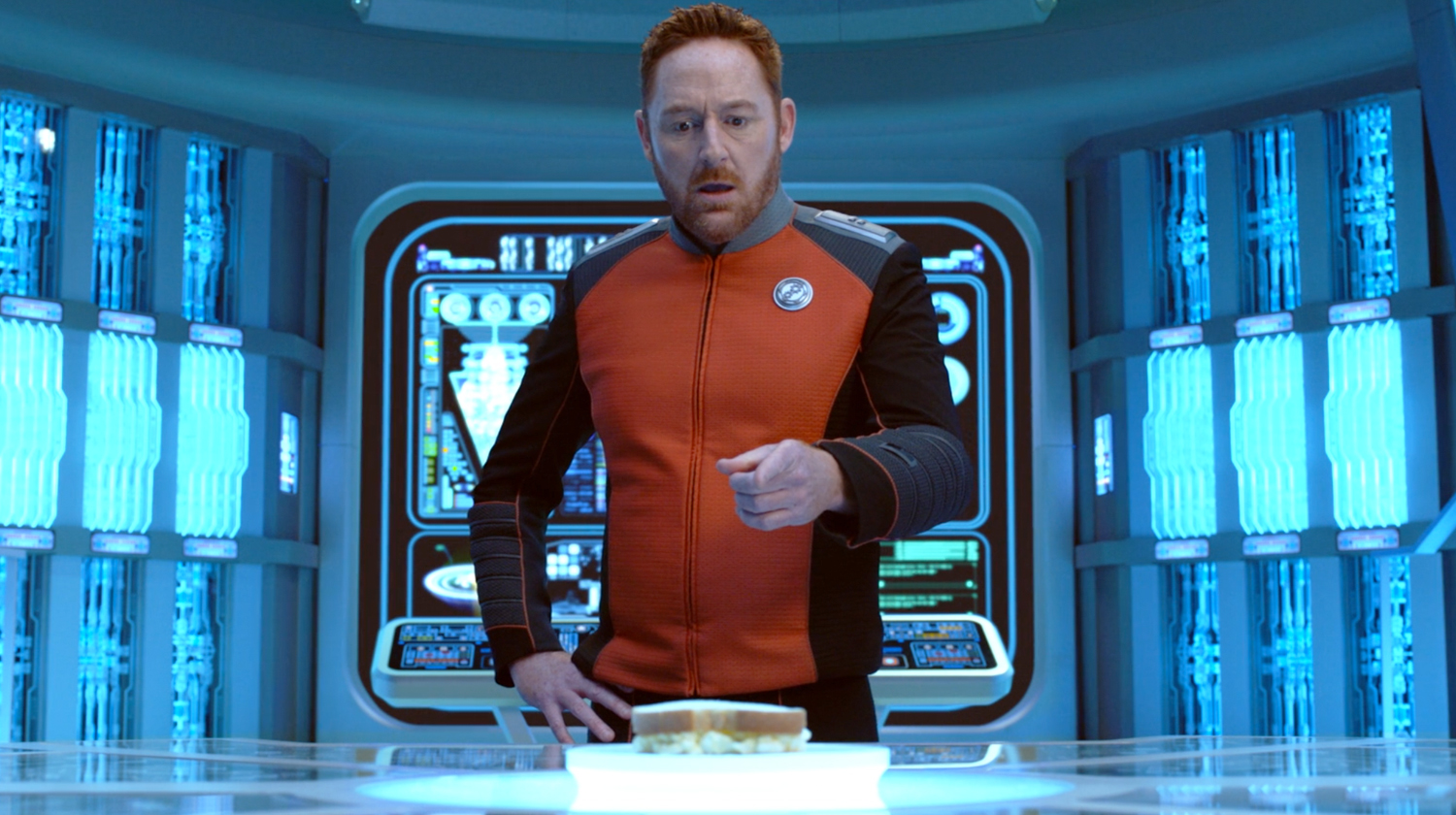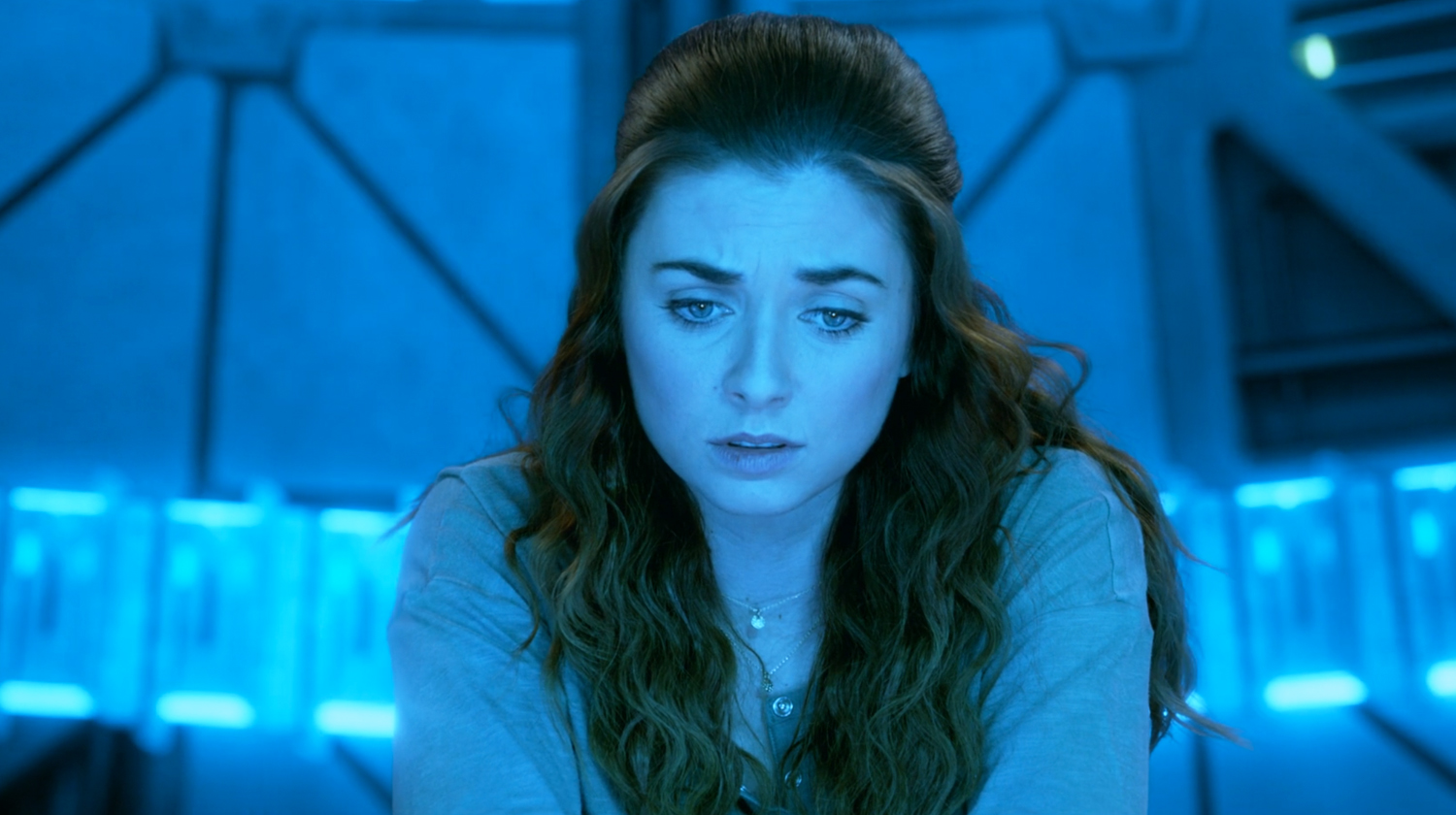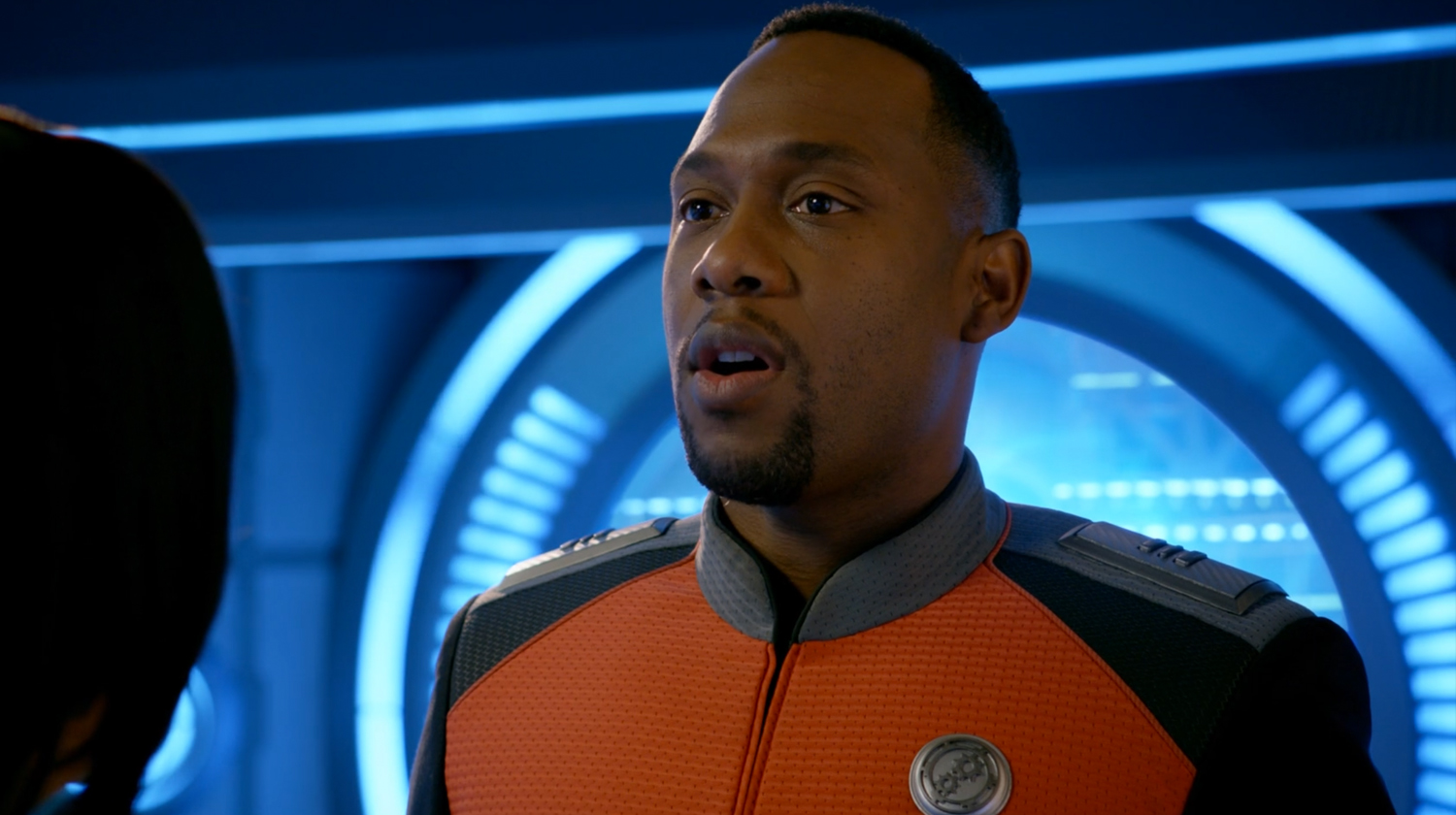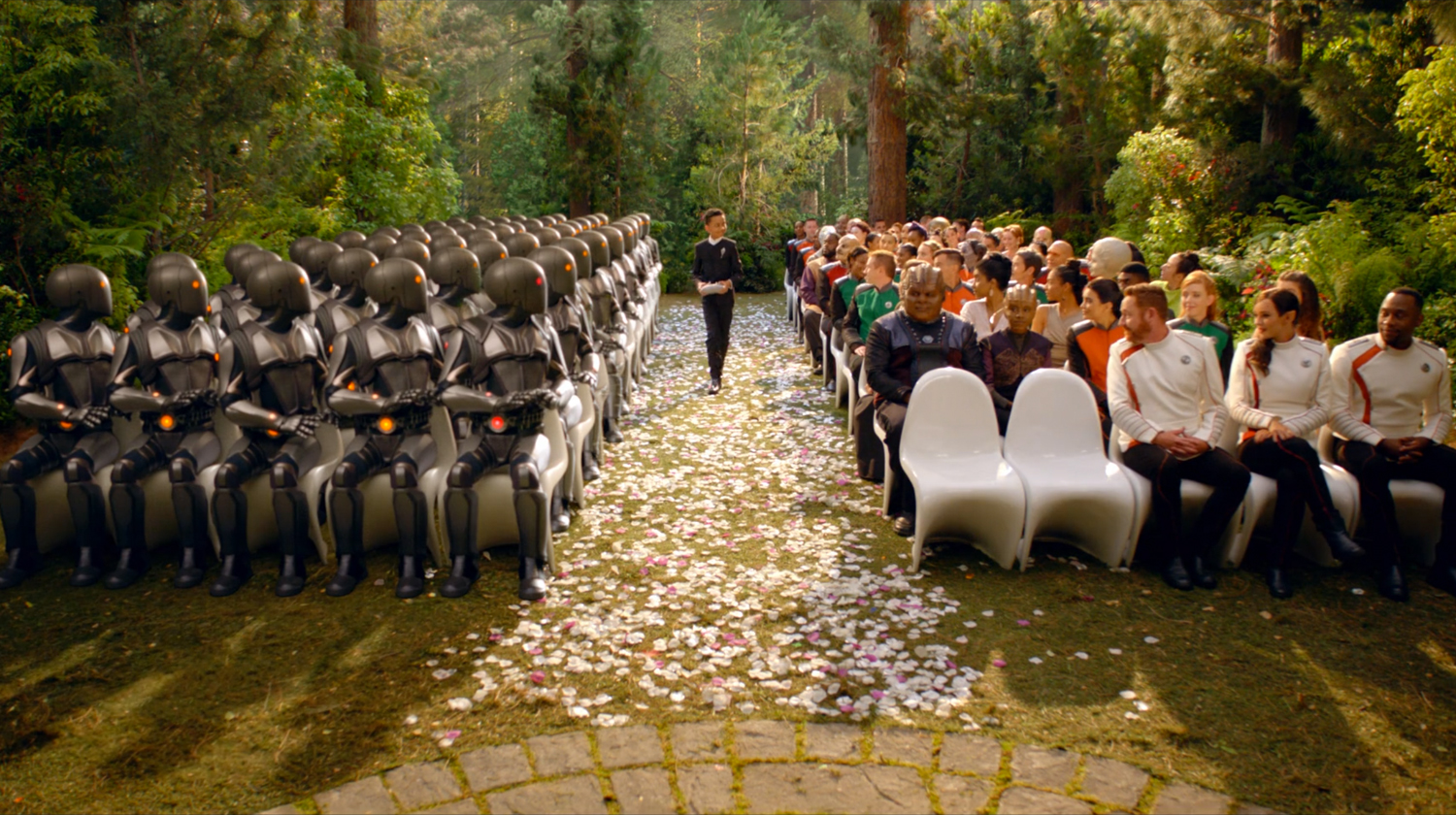Warning: Spoilers ahead for “The Orville” season 3, episode 10
Inevitably our summer of sci-fi celebration is drawing to a close. Season 3 of “For All Mankind” wraps up Friday (Aug. 12), the underwhelming “Obi-Wan Kenobi” already flashed past us, “Star Trek: Picard” came and went and “Star Trek: Strange New Worlds” revitalized the live-action subset of that particular franchise.
Thankfully, though, there’s still half a season of “Resident Alien” to come Wednesday (Aug. 10), and Season 3 of “Star Trek: Lower Decks” will kick off the fall. Sadly, the waning summer also means that the impressive third season of “The Orville” wrapped up this week.
Related: ‘The Orville’ season 3 premiere shows this sci-fi series is a tour de force
Tragically, the fate of this show is far from certain. Perhaps that’s even reflected in the finale episode’s title, “Future Unknown.” There are campaigns on Twitter using the hashtag #RenewTheOrville. No one outside the four walls of Seth MacFarlane’s $13.5 million Beverly Hills (opens in new tab) house or his $16 million Malibu Beach (opens in new tab) home, however, really knows exactly what’s going on.
Have the impressive sets at Fox Studios Century City been taken down? Probably. Have they been destroyed? Probably not. Does Hulu realize what an amazing show it has? More than likely. Does MacFarlane actually want to do another season? That’s the all-important question.
For “Star Wars,” Disney milked every last drop from its Tatooine sets, incorporating some-location-or-other on the least interesting planet in the Outer Rim Territories into every single live-action show we’ve had so far.
Similarly, Paramount maximized its set usage for “Star Trek: Discovery” and “Star Trek: Strange New Worlds,” launching into principal photography for successive seasons with little or no delay.
Disney, which owns Hulu, may well have asked for more “The Orville” from MacFarlane, with greater emphasis on quantity — but somehow that doesn’t feel like his style. “Family Guy” and “American Dad!” are still in full swing, plus all of his other commitments, which range from writing and recording albums to writing and producing major motion pictures. The guy is so talented it ought to be illegal.
However, despite the fate of “The Orville” being uncertain at the end of the second season, in April 2019, it only took a month or so for it to get officially renewed for the third season. Time will ultimately tell.
This third season has offered us the very best of “The Orville” universe, with Episode 3 “Mortality Paradox” earning the very first 10/10 awarded by this publication. We dived headfirst into some incredible story followups from earlier seasons, including the return of both the former Krill deep cover agent Tyler/Teleya (Michaela McManus) and even Laura Huggins (Leighton Meester), the latter of whom is Lt. Gordon Malloy’s (Scott Grimes) romantic interest from across time.
If you enjoyed those episodes, you’re in for another treat with the finale for Season 3.
The second season finale, entitled “The Road Not Taken” (S02, E14) was an amazing journey into an alt-history series of events; while this third season conclusion isn’t quite the same white-knuckle ride, it opens up some very interesting new possibilities. It even ties up a few threads along the way.
Related: ‘The Orville’ season 3 episode 2 tips its hat to classic sci-fi horror
We begin with a thoroughly entertaining set piece in which Lt. Cmdr. Bortus (Peter Macon) officially reunites with his former mate Klyden (Chad L. Coleman). In true Moclan style, it’s a primeval ritual based on pure animal-like lust, but it gets Isaac (Mark Jackson) thinking. He does some background reading and then opts to propose to Dr. Claire Finn (Penny Johnson Jerald) in the middle of the mess hall. Whoever said romance was dead on Kaylon-1? And all that before the opening credits.

He explains that he’s based his actions on calculating courtship duration averages for biological life forms, cross-referenced them with Dr. Finn’s current age and determined that this is an appropriate time for them to formalize their coupling. Brings a tear to your eye, right?
In the meantime, the Orville has been ordered to proceed to Sargus 4 to make contact with a science team there. Now, cast your mind way back to the first season episode “Majority Rule” (S01, E07) when then Lt. John LaMarr (J. Lee) in his infinite wisdom demonstrates a “too grindy” dance to Lt. Alara Kitan (Halston Sage) on an important-looking statue, in a very public place, in the middle of the day, in the middle of the working week. Needless to say, this all escalates rather quickly, and, before you can say, “People are obsessed with popularity,” he is incarcerated and forced to undergo a trial by social media.
Sargus 4 is very roughly at the same stage of technological and sociological development as present-day Earth. Only one young girl, Lysella (Giorgia Whigham) who works in a coffee shop, is able to help them. In fact, she is brought up to the Orville in a shuttle in order to help LaMarr boost his online profile, which is what ultimately saves him. Now, even though we don’t see it in that Season 1 episode, we are led to believe now that she actually pinched a communicator while on the Planetary Union starship. And this forms the basis of the secondary plot, which thankfully receives plenty of airtime, because it’s much more interesting than the primary plot.
Related: ‘The Orville’ Season 3 Episode 3 scores a perfect 10 from us
While en route — and while Dr. Finn considers and contemplates Isaac’s offer — the Orville picks up a signal coming from the surface that’s on a Planetary Union frequency, and it’s not the science team. Turns out Lysella has been broadcasting for months (on her stolen transmitter) hoping that someone would take her off the planet Sargus 4 and back to a far better future. In essence, she’s requesting asylum — and it’s granted. Then we start to take an interesting, deep dive into this seemingly straightforward action.

While it’s obvious that someone like Dr. Gillian Taylor could easily adapt being transported from Earth circa 1986 to Earth circa 2286 in “Star Trek IV: The Voyage Home,” it turns out Lysella not so much. She understandably begins to exhibit signs of survivor guilt. She gets to escape into a future where humans and aliens cooperate and explore the galaxy. No one on Sargus 4 is even aware of extraterrestrial life, let alone possesses the technology to build quantum core-powered starships.
As Capt. Ed Mercer (Seth MacFarlane) puts it, “Your planet still needs to make that leap of commonality.” And that’s the key, right there: something that unites the whole planet. In “Star Trek” history, we are led to believe it’s World War III, followed not long after by first contact and in fact that could be considered two leaps. Science fiction writers have often used a device that results in that “leap of commonality,” thus enabling the story to develop and people to evolve. It has to be something that ultimately reduces everyone to zero, removing any reason to fight, bicker or squabble over power, greed or money.
Sure, another world war and 600 million dead would probably do it, and so would a first contact situation, hopefully, but what happens when the event doesn’t improve the situation? In “Blade Runner” history, we are told that in 2022, an electromagnetic pulse (EMP) of unknown origin detonates somewhere on the U.S. West Coast. Cities are shut down for weeks, electronic data is corrupted or destroyed over most of the United States, and finance and trade markets crash worldwide. Food supplies become short. Theories spread as to the cause, but none are proven and many blame Replicants. Another corporate giant rises like a phoenix, and money, wealth and power remain as much a part of human existence as they’ve always been.
Related: ‘The Orville’ Season 3 episode 4 takes its world building to a new level
So what happens when there just plain isn’t an event that results in a leap of commonality? Is the civilization able to evolve, or is it doomed to destroy itself? How long do we have to wait and where are we, currently, in all of this? Somehow, even if climate change — for example — transforms the face of the Earth, without some other kind of transition, someone, somewhere will probably still try to get rich off of it.

Should an advanced civilization interfere? The Prime Directive, also known as Starfleet Command General Order 1, exists in “Star Trek” to prevent the United Federation of Planets from interfering usually with any race that hasn’t developed warp drive, although sometimes this is watered down a little bit to just any race not technologically advanced enough. Interestingly, this is the exact opposite of the Stargate program, where SG-1 and the other off-world teams actively seek out any civilization.
Despite Lysella’s protests over why the Union can’t help her world — and even an attempt to return to Sargus 4 with stolen plans for food replicators and so on — Grayson explains that the policy of the Planetary Union is not to interfere and, using the holosuite, she gives the example of Gendel 3. When early Union explorers reached out into space, they acted more like missionaries than observers. When they got to Gendel 3, however, they found a divided world, bristling with nuclear weapons and continents sliced up by national borders.
So they landed and revealed themselves, their technology, everything. They figured it was the right thing to do, that maybe they could help this planet skip over the nasty growing pains that all worlds seem to have to go through. But they couldn’t control the spread. Nation-states fought each other and wars broke out everywhere, because they all wanted to use the advancements for personal gain and for political dominance. They wiped themselves out in five years. Nine billion people, gone. After that, new laws were put in place.
Ultimately, it’s an interesting philosophical discussion — completely hypothetical, of course, but fascinating nonetheless. It’s nice to see a deep dive on an issue that seldom happens in “Star Trek,” which is really the grandfather of the future is a utopia trope.
Related: ‘The Orville’ Season 3 episode 5 revisits the Moclan gender controversy

Meanwhile, preparations for the wedding between Isaac and Dr. Finn continue and Bortus takes over the best man duties, much to Malloy’s annoyance. The result is a predictable but thoroughly entertaining stag night — because it’s so bad — and then an awesome hen night, complete with Isaac (we assume) showing every off-duty female member of the Orville’s crew just how well-oiled his servos are and that his nipple nuts come with optional tassels.
Further trademark subtle-yet-sidesplitting amusement is added when Isaac invites the entire Kaylon fleet to the wedding. It’s really a beautiful event. Bortus makes a complete mess of the speech, so Malloy steps in and saves the day. Even Lt. Alara Kitan (Halston Sage) makes an appearance. She also did that in the Season 2 finale, so hopefully that’s a good omen.
As for the future of Isaac and Dr. Finn, well, we only speculate. And as for the future of “The Orville,” we’re cautiously optimistic. There are still many plot threads that could be incorporated into Season 4, not least of which is the revealed identity of Heveena’s operatives on Moclus, the future of relations with the Krill and the Moclans and … will Lysella join the crew?
Rating: 7/10
The first, second and third seasons of “The Orville” are available to watch on Hulu (opens in new tab) in most countries, and packages in the U.S. start at $6.99 per month. Viewers in Belgium, Canada, Denmark, Hong Kong, Ireland, Italy, Luxembourg, Norway, Singapore, Spain, Sweden, Taiwan and the UK can watch on Disney Plus (opens in new tab) with accessibility coming soon for Japan and South Korea. Viewers in Latin American can watch on Star Plus.
Follow Scott Snowden on Twitter (opens in new tab). Follow us on Twitter @Spacedotcom (opens in new tab) and on Facebook (opens in new tab).

